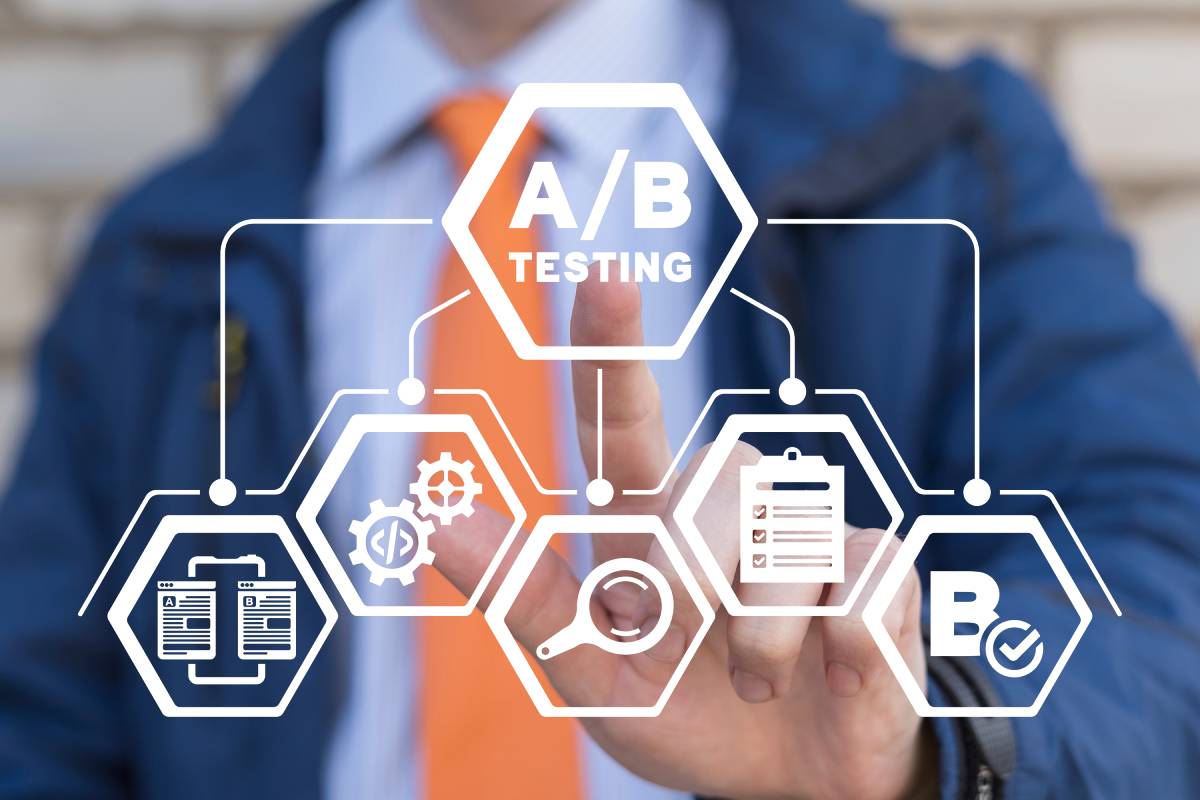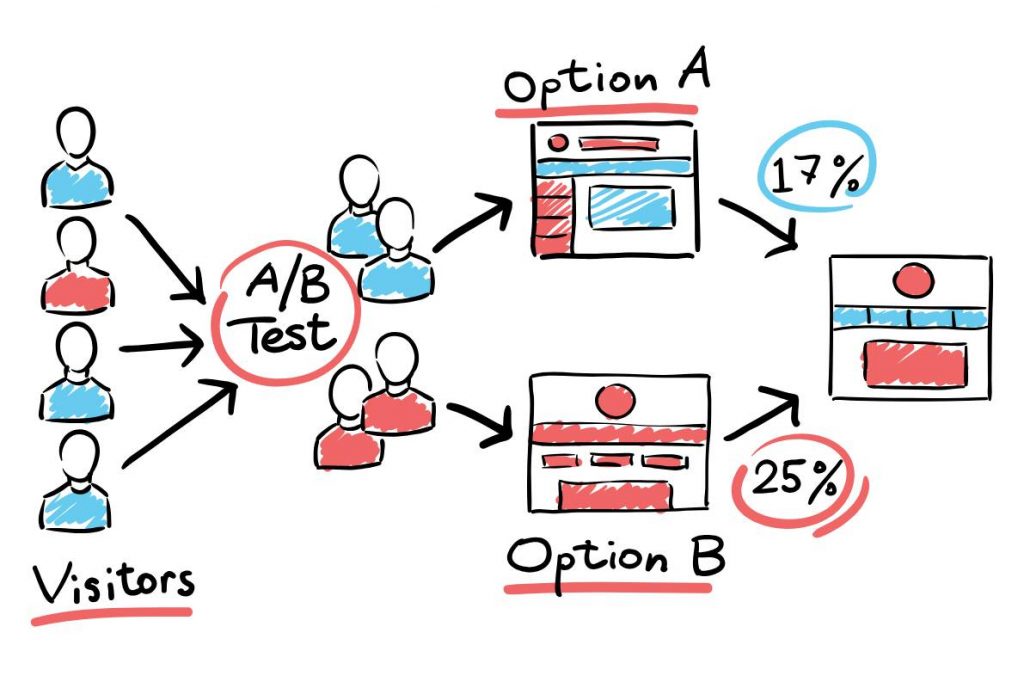Like any other field, customer experiences encapsulate all the touchpoints and senses towards the E-commerce business products and services. Up to 44.5% of organizations worldwide admitted that customer experience (CX) is a primary competitive differentiator. They said they believe artificial intelligence solutions will reshape their customer experience (CX) in the next five years.
Creating a quality user experience (UX) isn’t just about foreseeing what attracts/distracts website visitors; it also lies within these intangible insights of knowing what your target audience wants. For instance, rather than the price tag, 64% of clients value the actual customer experience before making a purchase, and 45,9% of 1920 business professionals reveal their top priority in the next 5 years has shifted toward customer experience due to its influence on customer purchase behavior.
It’s easier said than done. What if you need to know what works and what doesn’t? A/B testing might be your best friend. This powerful, underrated method shall help compare and optimize different versions of your webpage, app, or other digital assets and improve your conversion rates, UX, and revenue by testing different design, content, and functionality elements.
In today’s blog post, we’ll figure out how to plan, execute, and analyze your A/B tests in E-commerce and gain purchaser satisfaction without falling into the common pitfalls.

Basics of A/B Testing
A/B testing, or known as split testing, is a well-known methodology often applied in marketing, product development, and website optimization to compare two or more versions of a webpage, email, app, or other digital assets. The objective of A/B testing is to determine which version performs better in terms of predefined metrics or key performance indicators (KPIs). It involves dividing users or visitors into different groups, exposing each group to a different variant, and then analyzing the performance data to make data-driven decisions.
Typical applications of A/B testing include testing different versions of website landing pages, email marketing campaigns, call-to-action buttons, product descriptions, pricing strategies, and other elements that can impact user behavior and business outcomes. Instead of irrational decision-making, A/B testing is a scientific approach to making informed decisions, allowing companies to refine and develop their strategies based on real user data and performance metrics.
Planning A/B Tests for E-commerce
Identifying Goals and Objectives
Having clear and specific goals is an important first step in conducting an effective A/B test in E-commerce. It defines what you want to achieve through the test and provides a framework for measuring success. This will help you establish a foundation for your A/B testing initiative to escalate your performance on a much larger scale.
Defining Target Audience
Many businesses fail without knowing who their potential customers are. That sounds absolutely absurd, doesn’t it? We often perceive things only on the surface level without going underneath. An initiative product may fit a certain customer segment, then expand that horizontally and vertically eventually. Like how Apple products weren’t only tailored for designers, they grew their way out of their confines. That being said, identifying your target audiences helps to nurture the relevance of your A/B tests, leading to progressively meaningful insights and actionable results.
Selecting Key Metrics for Measurement
Apart from defining your target audience, having a decent key metrics measurement standard is just as vital. It determines whether or not the changes were necessary and its impacts. From there, it’s easy to adjust variants to meet your goals and objectives in the later phases.
Formulating Hypotheses
The foundation of A/B testing rolls around hypotheses, which includes outlining the expected changes and forecasting their impact on key metrics. It is an iterative process involving collaboration and carefully considering the elements that make up a successful A/B test. Well-defined hypotheses provide a roadmap for your experiment and guide the analysis of results.
Successful A/B Testing in E-commerce
A/B testing suggestions in E-commerce may vary based on unique contexts and goals; here are a few tips for the “win” you can take into consideration before carrying out any A/B testing in these cases:
Testing the website UX design
UX is one of the hand-down confusing and complex elements in a product design process. It tackles knowledge while combining creativity to make customer journeys pleasant or whatnot. We have talked about UX design a few blogs back; you can hop over there for more details. Over 66% of customers admitted they felt negatively about a brand once confronted with a frustrating experience. 55% claim that a bad mobile experience will stop them from further engaging with a brand, and 52% strongly believe an unpleasant experience leads to an immediate letdown in a brand. Keep your A/B testing in check to fully understand your customer’s expectations and the irritations to avoid them ever happening again.
Testing the website accessibility
When it comes to website accessibility, there are two main factors contributing to such design and content. Run A/B testing will let you know which features are worth further building in your website’s design and content.
For instance, 75% of disabled Americans admit that they surf the internet every day, 80% of viewers prefer to turn the sound off while watching a video wholly, and 92,3% of users approach the internet via their mobile phones. Therefore, twisting your website’s mobile-friendliness and subtitles to meet your audience’s expectations and preferences lifts customer satisfaction and scales your business.
Operate one campaign at a time and try both variations simultaneously
Testing multiple campaigns at a time often results in hectic and chaos. Often confuses and reduces the accuracy of data tracking. Focusing on a single campaign per time with different variations allows you to monitor the outcomes efficiently and effectively without jeopardizing others.
In addition, this campaign with different variables set up has to be running at the same time span in order to provoke correct results. If you test A/B testing campaigns at different times, it will be baffling to determine the factors affecting each variable. The only exception to this, however, is if your target is to find the most favorable periods to run a campaign. For example, to find the best time for a post on social media, you can try various stages at different intervals to see the best timing. Otherwise, it’s no longer a true form of A/B testing methodology.
Test scheduling
Figuring out the best time frame to catch the most attention and interactions from your target audience on different platforms is challenging. The magic of approaching your audiences at the right time, with the right content orientation, escalates your brand engagement and visibility. It boosts audience interaction, and if the content is interesting enough, they shall be willing to like or share it within your circles, helping you to reach even more audiences.
What if your target audiences share a different time zone than you do, or their active time is your rest time? It won’t be a problem due to the scheduling functionality available on most social media platforms. Although manually going back and forth among social platforms is inefficient, seeking help from social scheduling tools, which centralize all your social media platforms in one dashboard, scheduling posts, reels, short videos, and stories is now more exciting.
Test various promotion strategies
Customers are fond of promotions. Who wouldn’t? Data has shown promotions spark online purchases for 89% of deal hunters, and most Americans, 91%, are willing to receive advertising emails. With the right act, promotions and deals are outstanding ways to push accessibility, draw customers, and maintain retention.
Leveraging appropriate incentives sums up what your clients want. Discounts and offers only work when sewn to your audience’s wants and demands. Instead of choosing an offer based on guessing, apply A/B testing to discover which promotion works.
Future Trends in A/B Testing and E-commerce
Emerging Technologies
Due to the evolution of technology, new tools and approaches are emerging in the field of A/B testing. These technologies aim to augment the efficiency, accuracy, and scope of A/B testing processes; they are shaping the future of A/B testing, enabling more sophisticated, adaptive, and efficient experimentation processes in the digital landscape. Adopting these technology trends empowers organizations to obtain deeper insights into user behavior, develop user experiences (UX), and make data-driven decisions with greater precision. Then what are they?

Integration with Artificial Intelligence (AI) and Machine Learning (ML)
Integrating AI and ML into A/B testing not only automates certain aspects of the process but also enables enterprises to take advantage of these sophisticated algorithms to target personalization easily and promptly adapt testing strategies accordingly.
Predictive Analytics for A/B Testing
Predictive analytics forecasts the potential impact of different variations before the experiments are conducted. By leveraging historical data, user behavior patterns, and advanced statistical models, predictive analytics can guide decision-makers in prioritizing tests with the highest likelihood of success.
In A/B testing, this action empowers companies to make informed decisions, advance resource allocation, and boost the overall efficiency of experimentation strategies.
Looking ahead to the Future of A/B Testing in E-commerce
Everything starts with a hypothesis, experimentations, trials, failures, and experiences, and then success shall follow. Instead of double-guessing ourselves, A/B Testing has helped us to shorten the period, having the actual statistics and getting us close to the finish line without going through many failures.
As E-commerce and technology continue to evolve, the future of A/B testing is irreplaceable due to the constant shift in customer behaviors and expectations. If you haven’t unlocked the power of A/B Testing yet, it is not too late to get your hands on it, especially in today’s digital age.
ContactContact
Stay in touch with Us















